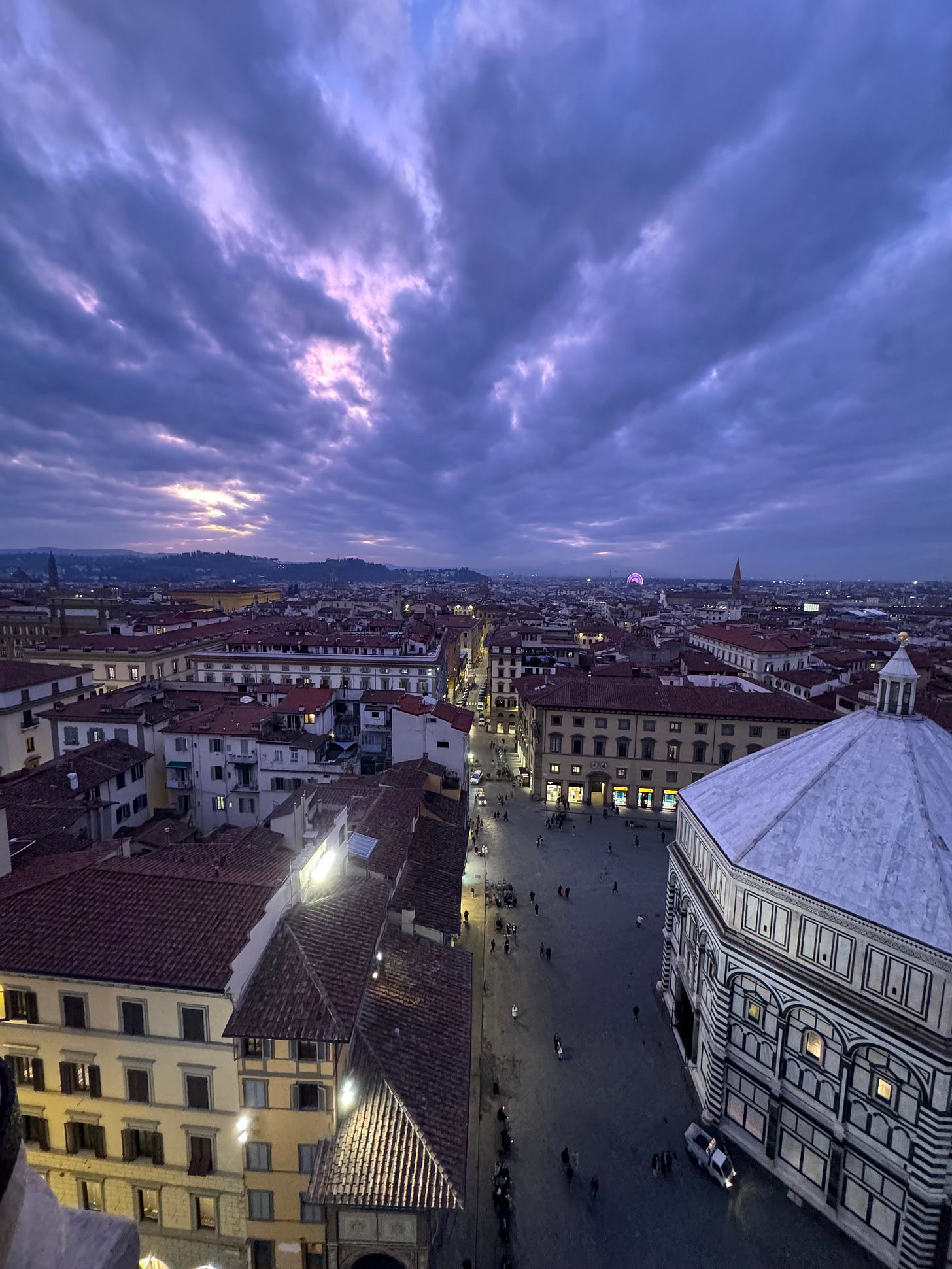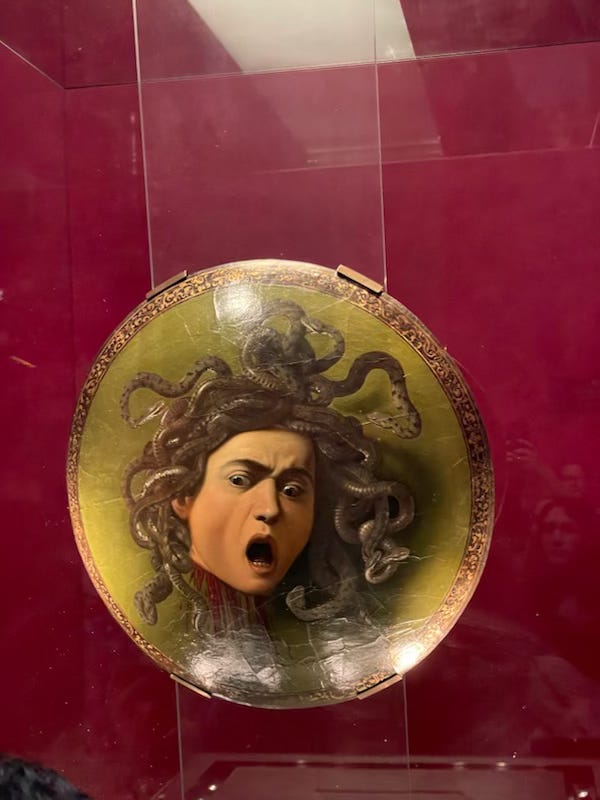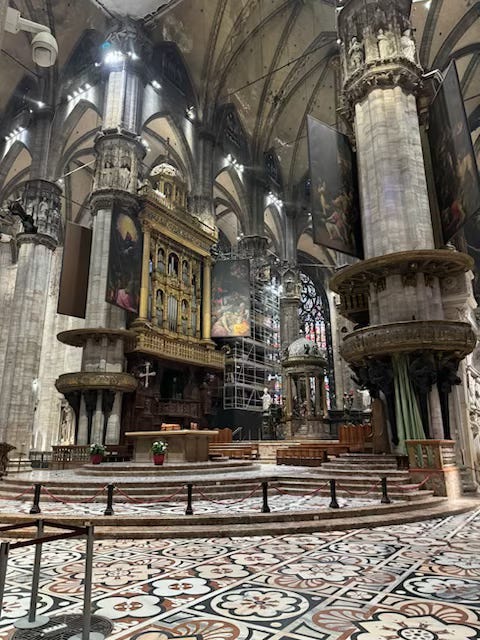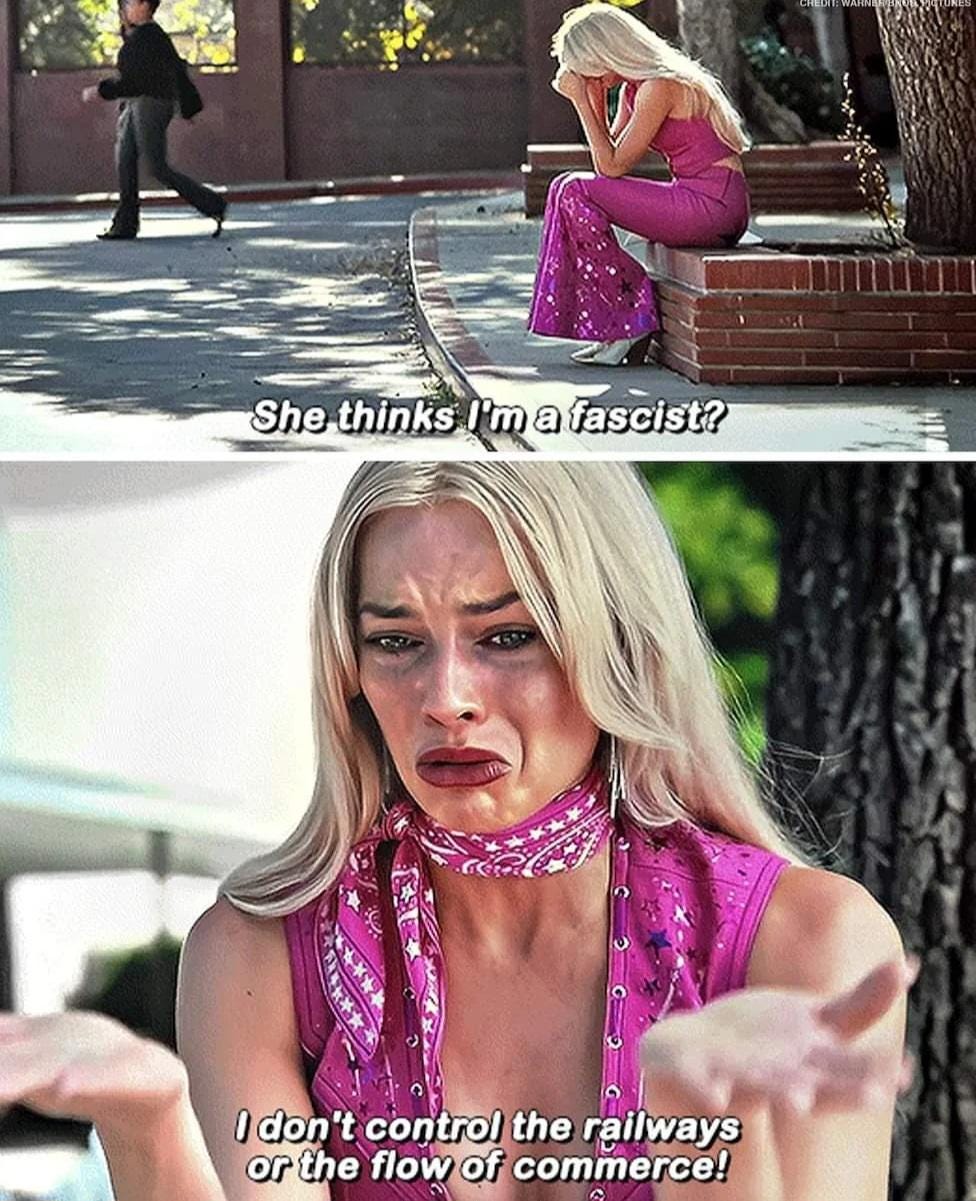The Incomplete Guide to Robot Dreams, Central Italy, and silent films
In which a robot dreams of a sunset, Vanessa finds the best sunsets Florence has to offer, and less talking makes more film
Robot Dreams review by Elliot
Sometimes you see a film and become wonderfully lost in it and wish it would never end. Robot Dreams is that film. It was nominated for Best Animated Feature at the 2023 Academy Awards, and deservedly so. And in any other year, it could have won, but it was up against The Boy and the Heron. Its UK release date was 22 March 2024, so for me, it’s a 2024 film. Right now, it’s my favourite film of 2024.
Directed by Pablo Berger, and based on Sara Vavon’s 2007 graphic novel, it’s not had the biggest release, and you will have to seek it out. It should be showing for the next week or so at your local Picturehouse and even a couple of Odeons. Also released under the Curzon banner, it should be available through its cinema-at-home service soon. However, I must urge you to see it on the big screen, with an audience, with children transfixed by something so offbeat and joyous.
Robot Dreams is a Spanish animated silent film, a set of adjectives I never thought I would put together before a film. I say silent: I mean it’s a film without dialogue.
The silent film scene has been dominated by Aardman for most of my lifetime, with their fabulous Shaun the Sheep films (theatrical and television specials alike). Even though they have been relegated to meme status, the Minions and their short films that accompany Illumination’s other films have been slapstick pieces of pure joy. So, although it’s not the mainstream for comedy at the moment, the medium’s capacity to have imaginative storytelling and awesome humour isn’t entirely without precedent.
Robot Dreams tells the story of Dog, a dog living on his own in New York in the 1980s. Everything has a joyously colourful, retro vibe to it throughout. Dog is alone, and sees an advert with the solution to his problem: a robot. He buys a robot. He makes it himself, and after a false start, it becomes his best friend.
That’s as much as I can tell you. It goes without saying that, at some point on their journey of friendship, something goes wrong, and the consequences result in an incredibly profound exploration of the self like nothing else. What do robots dream about when they want friends? What can they learn? What will lonely Dog do to find himself in a world where everyone else seems settled?
Having lived in a city where you feel like you have to do something at all times, where you have to take advantage of every opportunity, this felt all the more real to me. The characters are flawed, sometimes lazy, sometimes selfish, but they’re just trying to cope with loneliness; it’s so moving and profound.
There are musical sequences set to absolute bangers, and the film has entirely changed my relationship with Earth, Wind and Fire’s September, which is utilised to joyous and sometimes devastating effect. This is cinema as pure emotion and character rather than plot. From steel drums to rock and hip-hop, this is a soundscape of everything you could want to hear from a cinema’s sound system.
The lack of dialogue is fascinating. Not everyone will dig it, but I think it makes it all the more accessible and universal as a tale. What it does is it frees the story of any need to get bogged down. There’s a truism that the more specific you make the emotion or story you’re trying to convey, the more truthful and universal it can become, and this is a philosophy that Robot Dreams rides for its full runtime.
I now want to check out Pablo Berger’s back catalogue. The fact that he can make a Robot singing to birds so moving, make rollerblading by two 2D characters look so full of life, make a world that’s simultaneously cynical and joyful, all work, without dialogue, with just images, music, and movement, is something else. Despite featuring anxiety dreams, this is the opposite. A dream of a movie.
An Incomplete Itinerary to Florence and Milan from Vanessa
Get ready for 15K-step days!
I’ve previously written about the surprise holiday my husband organised for us in Italy. The trip started in Venice, and I shared my impressions of its unique public transport, the unique history that shaped the city, its unique celebrations for the carnival season, and its unique food and drinks scene. But after 3 days, it was time to travel to Florence by train.
Florence: Ambling through art and architecture
Florence is an eminently walkable city - our hotel was 10 minutes away from the train station, and 5 minutes away from the Florentine cathedral and its bell tower and baptistery. Within another 10 minutes, we were at the entrance to the famous Galleria dell’Accademia, home to Michelangelo’s David and additional works, based on an initial attempt to create a museum dedicated to the artist. I would prioritise this museum if you are in danger of art fatigue - you don’t want to visit Florence and miss out on the big man. Everything else you can see on Wikipedia and get a good enough impression of it all.
If that didn’t put you off, the famous Uffizi Galleries are less than 15 minutes away - one of the first modern art museums based on the inheritance of the famed Medici family. They house famous pieces such as Boticelli’s Birth of Venus, paintings by Leonardo da Vinci, and Caravaggio’s Medusa. The Uffizi entrance can be combined with a ticket to Palazzo Pitti and its Boboli gardens; even though we weren’t going to stay the 5 days that it is valid for, that worked out cheaper. However, we were not admitted to the gardens at 4pm, despite their closing at 5pm - avoid our mistake! It just means we have to return to Florence, alas.
You might want to limber up if you want to climb the cathedral’s duomo and that aforementioned bell tower. The former clocks in at 463 steps, while the latter measures 414 steps. The stairways are narrow, but every so often there are opportunities to let faster movers pass, or take a rest, particularly for the bell tower, and you are rewarded with spectacular views - try to time this for sunset if you can! An equally lovely, less tiring place to enjoy the sunset is across the river Arno at the Piazzale Michelangelo, outside of the city walls. It can be quite romantic if you walk up through the Giardino delle Rose, though there’s none yet in February.

Milan: The Last Supper and the largest Italian cathedral
We were in Milan for less than a day, so the agenda was jam-packed. Our first stop was Leonardo da Vinci’s The Last Supper. Seeing this is not a spur-of-the-moment decision, as tickets will be booked up at least 2 months in advance. Don’t be surprised that besides da Vinci’s mural, there is only one other piece of art - the signs with the historical context setting will explain why.
Our other agenda item was the Milanese cathedral, the largest in Italy, and third-largest in the world. While its foundation was laid in 1386, it was only completed in 1965, which allows for the unique opportunity to climb onto its roofs to closely examine its architectural details and enjoy the views of the city. Given the interesting but exhausting experience of climbing up all of Florence’s tall sights, we opted to use the lift for the way up - even with advance tickets we were able to make that change in the tourist help centre.
Ciao bella: Transport, food and souvenir choices
Getting from Venice to Florence, and then Florence to Milan and back, was all very easy and comfortable to arrange. The train network in Italy is a competitive market, meaning that there are multiple operators on the same tracks, offering different services. On our way out of Venice we snagged first class tickets, which afforded us comfort of a large table and free snacks, and wasn’t much of an upcharge. Our other journeys were standard class, but still with a modest table for each seat.
Something Italians have a lot of experience in.
While in Florence, we regularly enjoyed Mercato Centrale as an opportunity to sample local food alongside more established culinary choices (not every dinner calls for cow’s stomach, you know). Florence is also known for steak and ribollita (soup), which most restaurants will have on the menu, and is good comfort food in the early spring.
In Milan we ventured to the Michelin Guide-recommended Serendib, as my mother’s family hails from Sri Lanka, and this was an opportunity to share this culinary heritage with my husband. Any of the curries is a great choice, with chapatis on the side, though, with cultural pride, I would steer away from the Indian dishes.

As we tend to fly cheap and therefore pack light, souvenirs are not our priority. However, we splurged a little bit to take the taste of Italy home. The chain Nino and Friends has stores in Venice, Florence, and other Italian cities, and offers sweet, savoury and liquid souvenirs. We personally went in for a collection of their pestos, limoncellos and liqueurs, and chocolate pralines with typical Italian fillings, and the chocolates are already gone.
Whatever you buy, if you are resident outside of the EU, remember that depending on your purchase amount, you may be able to reclaim VAT on items you bring home.
Have you been to Florence or Milan before? Is there somewhere else in the world that has art you want to see? Sound off in the comments.
Less Dialogue is more Character: An Incomplete List of Dialogue-less Films
As Pablo Berger and Robot Dreams have demonstrated to me this week, not all movies need dialogue. In preparation to watch Godzilla x Kong: The New Empire, I rewatched Godzilla vs Kong, and I feel like the lesson was reinforced that you could absolutely cut half of the dreadful dialogue from so many modern blockbusters that just have people explaining the plot to each other. Here’s some modern classics lacking dialogue that prove that less is more.
1. Shaun the Sheep
As previously mentioned, Aardman are the kings of the modern silent movie. Wallace and Gromit’s third film, A Close Shave, had a breakout star in Shaun, a joyous and hyperactive sheep. In 2009, CBBC commissioned a series for him, surrounded by an ensemble of sheep in all shapes and sizes, as well as Bitzer, the farm dog, and the Farmer, who communicates entirely in grunts and confused noises.
The show is full of fun, intelligent, ambitious slapstick farces and a delightful ensemble. Each episode is 7 minutes long, and they are just the ticket for a quick hit of fun British humour. The success of Shaun the Sheep had led to regular specials on the BBC, as well as two feature-length adaptations.
2. Shaun the Sheep: The Movie
Despite its more confusing real title (there’s a reason the marketing diverged), the Shaun the Sheep movie could not be built on a more simple premise: Shaun is bored of the farm, and wants to go to the city, but soon finds himself way in over his head chased by Trumper, an animal containment worker, who is basically a fascist. The resulting chaos that Shaun and his friends go on is full of wonder and laughs.
Shaun the Sheep, and both movies, The Movie and its 2019 follow-up involving an alien abduction Farmageddon, are all available on BBC iPlayer.
3. The Red Turtle
The Red Turtle is a remarkable and strange film about a man’s survival on a desert island. Studio Ghibli was amongst the many co-producers of this strange 79-minute fever dream. A man is set adrift on island, left by himself, alternating between hallucinating string quartets and a conflict with a creature preventing his escape. He eventually meets a woman with the same red hair as the red turtle seemingly holding him prisoner. It’s a strange but satisfying film. It’s visually lovely and unlike anything else, if very weird.
The Red Turtle is available on Studio Canal Presents, an Amazon add-on channel, and all other digital retailers.
4. Wall-E
Okay, Wall-E does have dialogue in the second half, but I would argue that given just how much of the film is an homage and love letter to the silent era, it basically counts as a dialogue-less film. You could remove the Captain’s dialogue and it would still work.
Wall-E is a towering achievement, a joyous waltz, a moving and romantic adventure. It’s about the environment, about people, about soul-searching. It’s a technical and sound achievement, featuring Ben Burtt’s most inspired work. It descends from a legacy of incredible Disney movies, including the irreplaceable Fantastasia. Who needs dialogue when the imagery can be made this compelling? In fact, you can’t go wrong with most of the Pixar shorts that prelude most of their feature film releases, that again, mostly have no dialogue, but a lot of heart.
Wall-E is available on Disney+.
Is your favourite silent film from the modern era, or one of the classics? Let us know in the comments!






